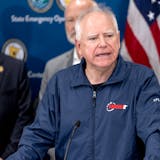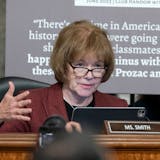A 4.5-mile bike trail slices through north and northeast Minneapolis, starting at Theodore Wirth Parkway in the west and ending at the foot of the Washburn-McReavy Hillside Cemetery. It’s a smooth ride, with trail lighting and an asphalt surface that is plowed in the winter. But there’s one gaping 600-foot obstacle right in the middle that snips the trail in two — the Mississippi River.
Cyclists, park boosters and others who have yearned for greater human connection to the industrialized Mississippi riverfront have long advocated for knitting together the two segments of the Great Northern Greenway trail. Now that idea is a step closer to reality.
A recent feasibility study by the Minneapolis Park Board shows a new bridge can be done, and that ideally it would span the new 26th Avenue Overlook in north Minneapolis and a vacant building that the Park Board owns at 1720 Marshall St. NE., next to Broken Clock Brewing Cooperative.
“For us that live in northeast and north Minneapolis, the river is the largest body of water,” said northeast resident and bridge advocate Dan Miller, who biked to the 26th Ave. N. Overlook on Saturday for a site tour hosted by the Park Board. “So being able to connect with the nature that is around the river is just really important.”
“We’ve been waiting for this for a long time,” said North Side resident Georgianna Yantos at a recent town hall for the project at Broken Clock. “We’ve always wanted to be able to connect north and northeast. We don’t want to be isolated.”
The Lowry Avenue Bridge, completed in 2012, is the latest Mississippi River bridge to be reconstructed in the footprint of a preexisting bridge.
The last time a new corridor was built across the Mississippi was in 1977, according to the feasibility study. That was the year the Camden Bridge was built, linking Webber Parkway in north Minneapolis to St. Anthony Parkway in northeast, completing a segment of the Grand Rounds Scenic Byway.
For years, the Park Board considered the possibility of converting the nearby Burlington Northern Santa Fe bridge, located about 500 feet away from the Overlook, into a structure that could accommodate a recreational trail. But that bridge is still used to transport cement from north Minneapolis’ riverfront industries, and BNSF isn’t willing to risk having pedestrians and cyclists share its freight line.


